Labour MP Mark Tami on life after the 'red wall' fell
- Published
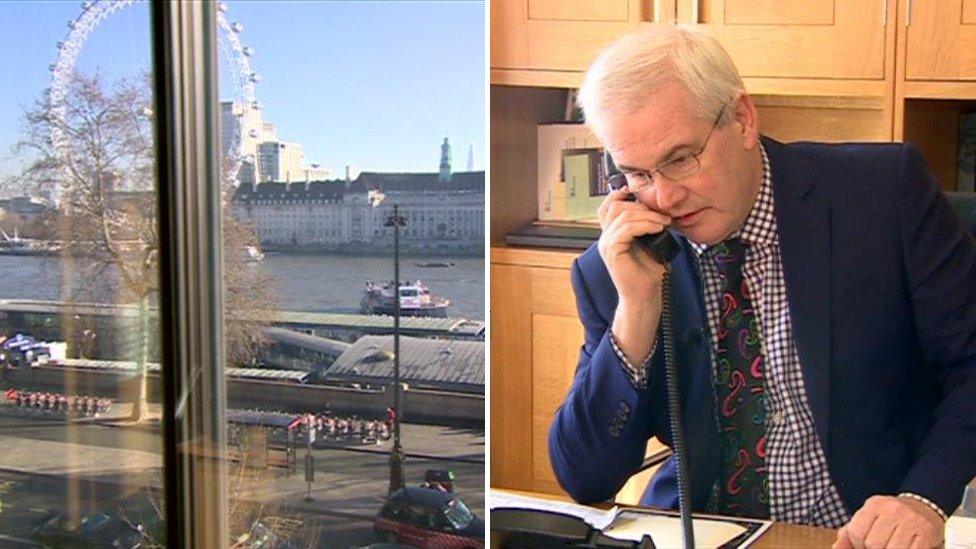
Mark Tami is the sole survivor of north Wales Labour MPs at Westminster
Mark Tami's office, overlooking the Thames and the London Eye, is a room with a view. Here, in fairly spacious surroundings, he can hold meetings of Labour's north Wales parliamentary contingent, whenever he wants.
What was once a fortnightly gathering of six is now a quieter affair at a table-for-one.
He is the sole survivor of the Tories' demolition job on Labour's north Walian red wall.
The last man standing, the only remaining brick, etc etc. He has heard most of the analogies since December's near wipe-out and responds to them with a rueful smile.
"You've just got to get on with it," he says. "We started with six seats in north Wales and ended up with one, and only narrowly."
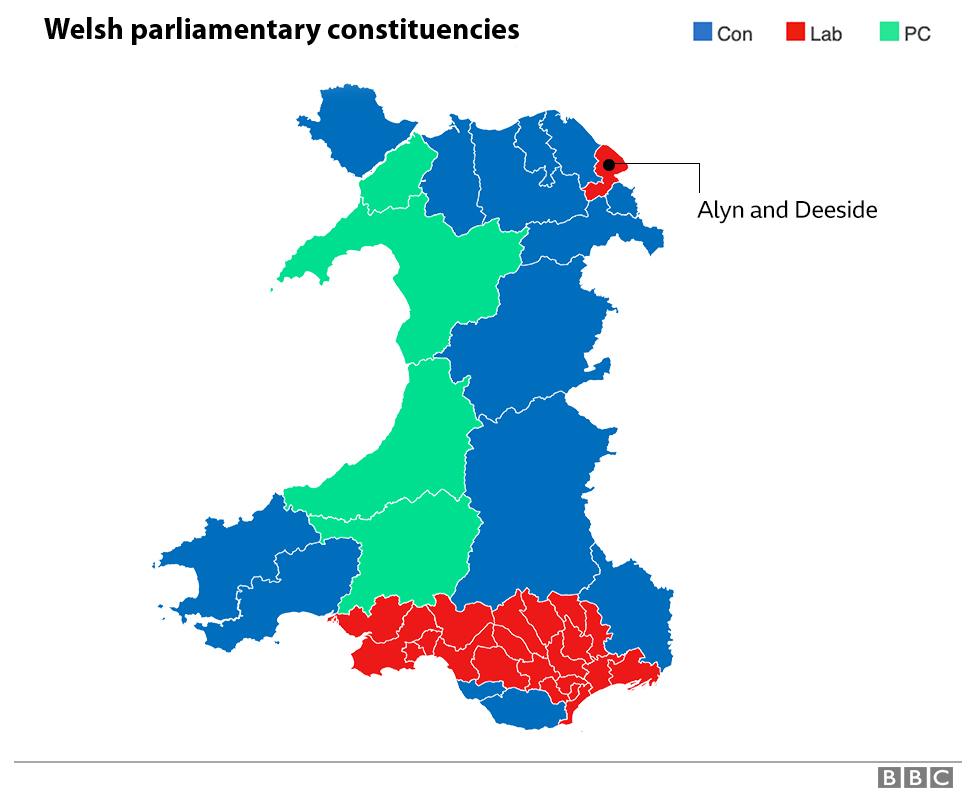
Mr Tami's own majority fell from more than 5,000 to just 213 votes. During election night it had looked touch and very nearly go. He was getting messages of mistaken commiserations during election night.
He says he misses the camaraderie of his colleagues but adds: "I'm just going to have to get used to it. It's a very different environment.
"It's not a nice thing. You build friendships with people over many years. I still see those people but obviously they are not here now."
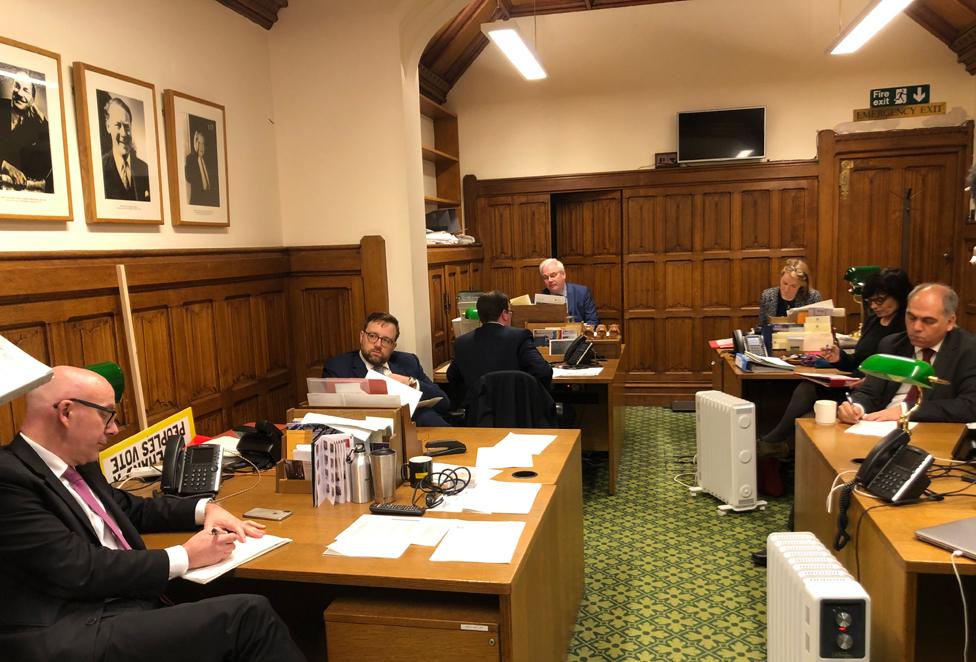
Mark Tami (rear) sitting in the Labour Whips office in the House of Commons
There is some strength in numbers in the daily meetings in the Labour whips' office. Here Mr Tami continues his role as one of the disciplinarians of the parliamentary system, ensuring Labour MPs know what the party line is on votes in the Commons.
As we are invited in to one of their meetings, there is a jocular atmosphere. Maybe it is a form of group therapy.
Mr Tami tells his colleagues we are filming him, almost Attenborough-style, as an endangered species. I lower my voice to the appropriate hushed tones. For the honourable member for Alyn and Deeside, there is some familiar company, albeit from the south, in the form of fellow Welsh MPs Jessica Morden and Chris Elmore.
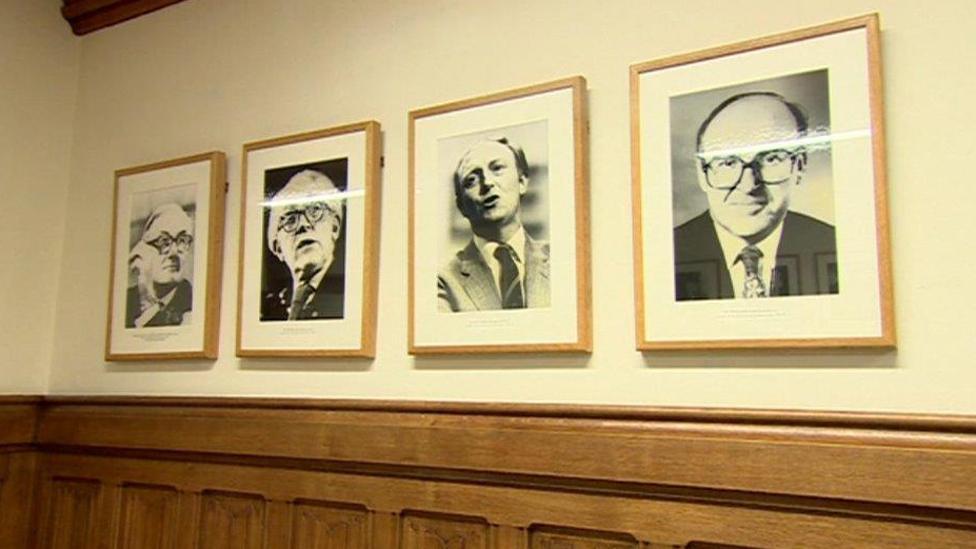
Portraits of Labour leaders past - including three MPs with Welsh constituencies
Lining the walls of the whips' office are portraits of former Labour leaders, including a side-by-side-by-side trio of James Callaghan, Michael Foot and Neil Kinnock - a reminder of how Welsh constituencies once housed the party leadership production line.
I suggest the role of a whip is rather reduced from the last parliament when every vote mattered.
"We were winning votes on a regular basis. Now we have a Tory majority of 80. But you can't just say 'What's the point?'. You have to argue your corner."

Kitchen cabinet - Mark Tami catching up with paperwork
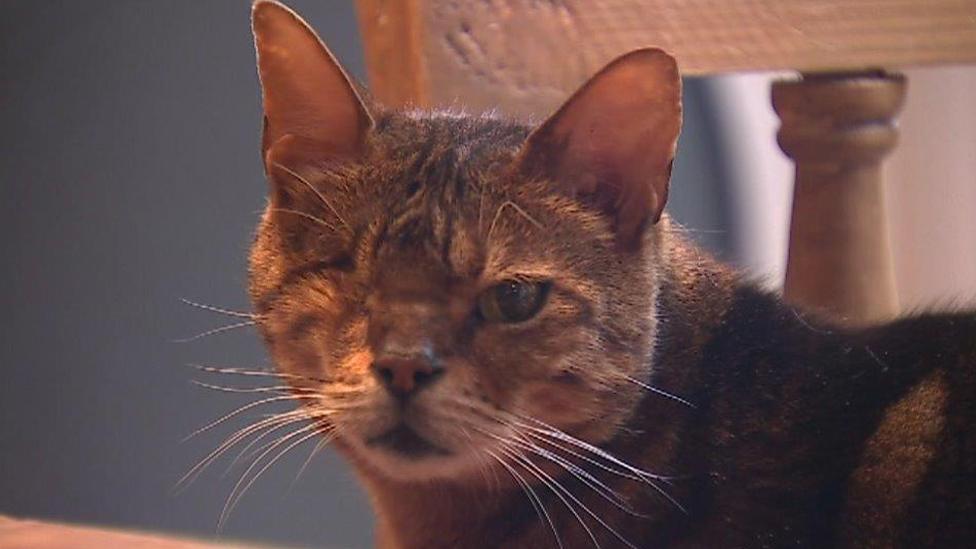
At home - with Bobby the one-eyed cat
'Survivor guilt'
Back home, at the start of the parliamentary recess, there is plenty of time to reflect as Mr Tami makes me a coffee in his farmhouse kitchen. His one-eyed cat Bobby settles alongside.
"People talk about survivor guilt," says Mr Tami, who is supporting Keir Starmer for the leadership. "And I suppose there is a bit of that. You are the last one standing. But that gives us as a party the opportunity to build back from somewhere.
"There are risks as well. Although this was our worst defeat since 1935, there isn't anything to say it couldn't get worse. We really have to address the problems we face as a party.
"You will always get people who will think just one more push and we can get over the line.
"This election has shown that the line has moved further. I am one that doesn't believe we won the argument. We didn't win the argument at all. We really have to re-engage."
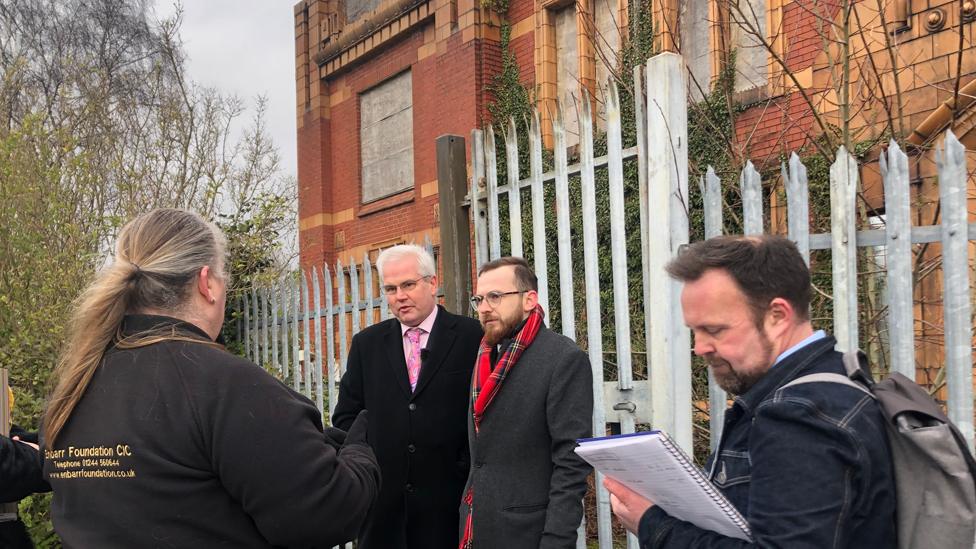
Mark Tami on a site visit to the Shotton steelworks office
I join him on a site visit to a local landmark. The Shotton steelworks' general office and clock tower has been repeatedly vandalised since it was boarded up more than a decade ago. Grade ll-listed, the John Summers building was built in 1907, and was the administrative base for a site that, at its peak, employed 10,000 people.
There are ambitious plans to transform it into a community hub.
But for now, this red-walled edifice from a bygone era is decaying and featured on a list of the UK's most endangered buildings. It is in need of extensive restoration to return it to its former glory.
It seems Mark Tami is never far from a political analogy.
- Published13 January 2020

- Published4 February 2020

- Published11 February 2020

- Published13 December 2019
